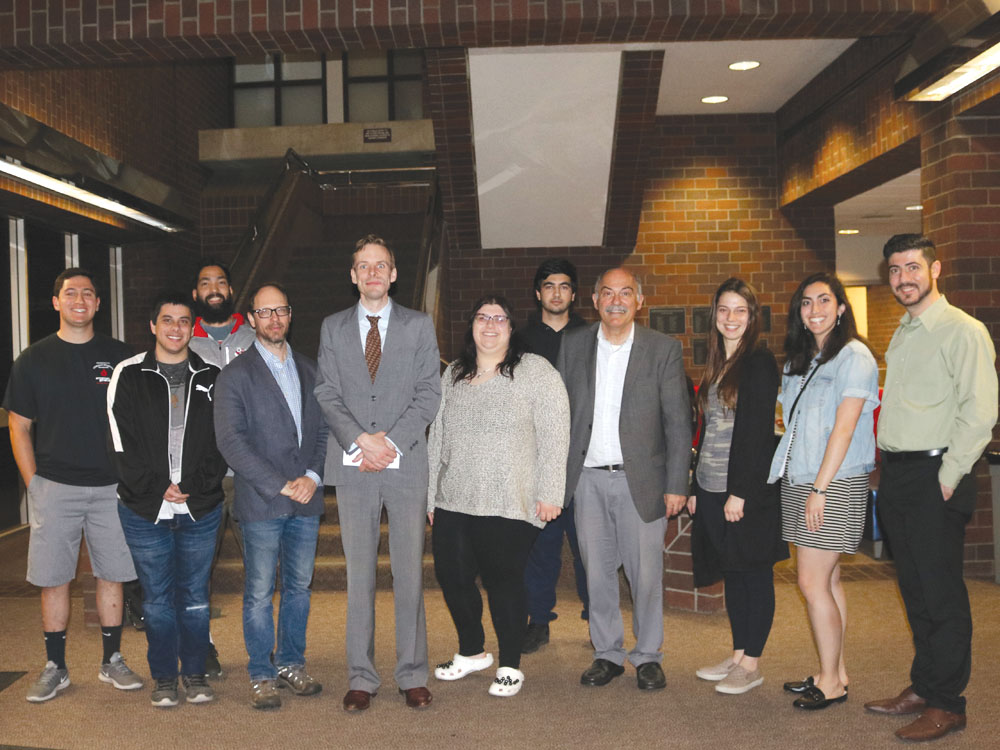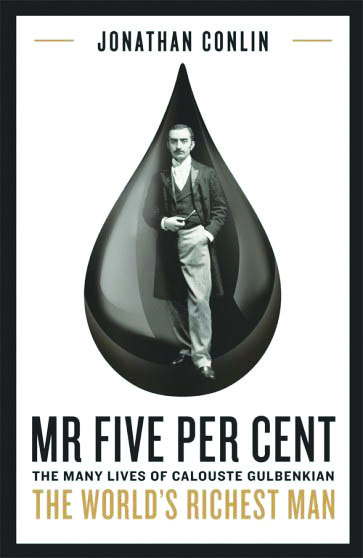
Photo: Andrew Hagopian
David Safrazian
Staff Writer
Calouste Gulbenkian, “Mr. Five Per Cent” or “The Honest Broker,” became the world’s wealthiest man by negotiating a five percent share of the Turkish Petroleum Company (later the Iraq Petroleum Company). Following the drawing of the famous “Red Line” in 1928, delineating the areas of oil exploration in the Middle East, Gulbenkian became a partner to the great oil companies of the day, BP, ExxonMobil, Total, and Royal Dutch-Shell.
On Thursday, April 2, Dr. Jonathan Conlin was the guest speaker in the Armenian Studies Program Spring Lecture Series. Dr. Conlin presented his newly published biography on Gulbenkian titled, Mr. Five Per Cent: The Many Lives of Calouste Gulbenkian, The World’s Richest Man. Dr. Conlin, who was born in New York, studied history at Oxford University and since 2006 has taught modern British history at the University of Southampton, in the United Kingdom. 
Dr. Conlin’s presentation brought great insight into the life of Gulbenkian, also exploring the extent to which Gulbenkian interacted with and was a part of the Armenian community.
According to Dr. Conlin, Gulbenkian made his fortune more as a skilled negotiator and financial architect, rather than as an oil man who knew the technical aspects of oil production. Gulbenkian was born in Istanbul in 1869, to a wealthy (amira) Armenian family, who later played an important role in the Armenian community and became a “leader of the diaspora.” The Gulbenkians were originally from the town of Talas, in central Turkey, and were major benefactors of the town.
The late 19th century was a period of turmoil in the Ottoman Empire, with wealthy Armenian families threatened not only by government officials, but by Armenian revolutionaries. Gulbenkian, who had been educated in London, faced a difficult choice, with conflicting ideas of identity: loyal Ottoman subject and/or loyal Armenian citizen.
Gulbenkian was not an oil man by profession, and only visited an oil field once in his life when he was in Baku. It wasn’t until the 1930’s when Caloustian was given the title “Mr. Five Per Cent,” as this was when the income from his oil shares started coming in. Gulbenkian helped shape the oil industry that we know today.
According to Dr. Conlin, estimating Gulbenkian’s total wealth is difficult because of the variety of his investments, but by 1955 it is estimated that Gulbenkian was worth more than $5 billion dollars.
In 1956, the Calouste Gulbenkian Foundation was established in Lisbon, Portugal and today is the 36th wealthiest foundation in the world. The Foundation houses a large collection of art that Gulbenkian gathered over the years. Gulbenkian’s one passion outside of accumulating wealth was his interest in expanding his art collection. Beginning in the early 1900’s, and especially in the 1920’s, he acquired a vast and eclectic art collection. Gulbenkian purchased the Paris hôtel (palace) of Rodolphe Kann to house the vast collection.
Gulbenkian wore many hats throughout his life, as diplomat, businessman, art collector, and philanthropist. He worked hard to maintain his five percent share of the TPC, which kept his reputation as “King of Oil” around the world. During his lifetime Gulbenkian was also a supporter of Armenian schools, orphanages, and relief societies, later becoming the President of the AGBU from 1930-1932.
Dr. Conlin discussed the “Basturma Problem,” a reference to the issue of Armenian identity that Gubenkian’s daughter Rita used as a metaphor of how she faced difficulty with her father growing up. The “Problem” was also the question of how to situate oneself as a family which showed little interest either in being “good Armenians” or in assimilation.
To conclude his fascinating presentation, Dr. Conlin reminded the audience that although Gulbenkian was a wealthy person, “money does not always bring you happiness.”
 Hye Sharzhoom Armenian Action
Hye Sharzhoom Armenian Action